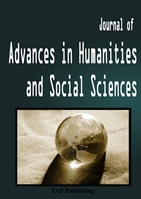
|
Published online: 2017
Abstract
This study attempted to strengthen pre-service English major teachers' academic English presentation ability through the instruction based on Miller's model and investigate their attitudes towards the teaching methodology. The cluster sampling was used in this study. Therefore, 26 pre-service teachers studying in the English major program were selected. The research instruments for the development were 1) a course syllabus whose instructional process was systematized according to Miller's model, 2) scholarly presentation knowledge and language tests, 3) assessment forms for both simulated and authentic presentation contexts, and 4) an attitude investigation form. Regarding the instructional stages of Miller's model: Knows, Knows how, Shows how and Does, the sampling group's range of score was classified into the lowest and the highest with their degrees of development as follows: 60% (average) and 90% (very good) for Knows, 70% (good) and 90% (very good) for Knows how, 60% (average) and 100% (very good) for Shows how and 72% (good) and 100% (very good) for Does. For their mean score of progress, 16 and 10 students scored in the very good and good levels. From the attitude investigation by open-ended questions, the results unfolded their positive attitudes towards the teaching methodology, which helped them learn, the learning atmosphere, and the teacher. The results indicate that the instruction model composed of cog- nitive and behavioral teaching steps is of great assistance for teachers to understand individual students' learning problems and academic needs. Furthermore, the use of this model can help them gain a good command of skills together with endurable understanding and prepare them to perform effectively and wisely in their careers and real world situations. |